“Does that harness have a full strength haul loop?” they say, pointing to a friend’s gear at the crag. It’s a phrase I hear all the time, and it sends shivers down my spine. Do these people know what they’re asking? What does “full strength” mean anyway?
Unfortunately, this question does not come with an easy answer. But here’s the background: In order to sell Personal Protective Equipment (or PPE) in Europe, it must be CE certified. (Interestingly enough, this is not a requirement to sell product in North America). There are many requirements for certification, but for sake of this discussion, we are concerned with only one of them, which is often thought of as the main requirement. This requirement is known as ultimate breaking strength, or, in other words, a measurement of how strong something is.
For Cams, the minimum ultimate breaking strength requirement is 5kN, for carabiners it’s 20kN in closed gate, 7kN in open gate, and 7kN in minor axis; for harnesses it’s 15kN, slings are 22kN, stoppers are 2kN, ice screws are 10kN and on and on it goes. Note: remember - 1kN = ~ 225lbf.
So when someone asks whether or not something is full strength, they probably don’t know that there are different requirements based on what the product is. And as far as a haul loop goes, there is actually no requirement for its strength. When people ask about its strength, they could very well be asking if it’s as strong as the entire harness or as strong as the belay loop, which is not necessarily the case.
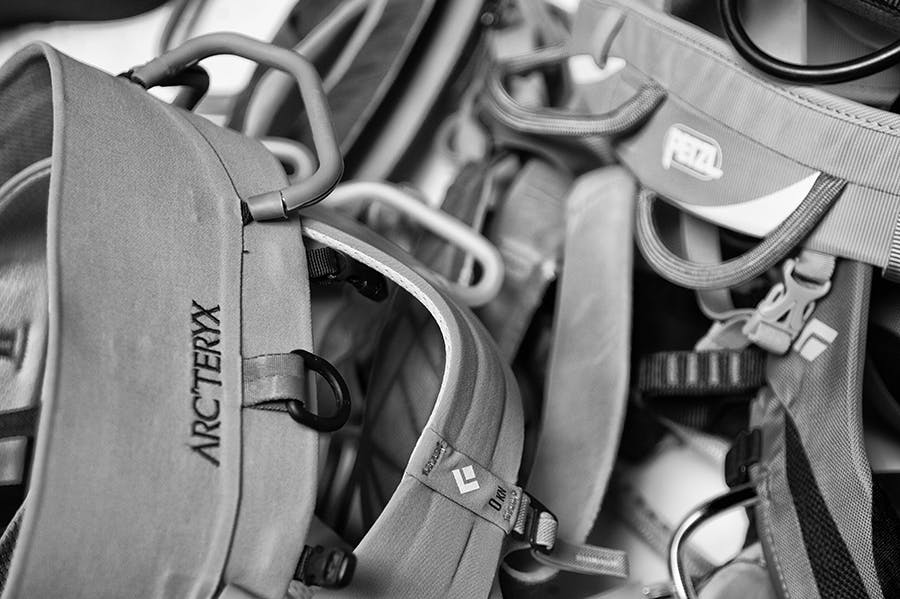
All Images: Mat Kestle
Let’s assume for a second that people are wondering if the haul loop is the same strength as the belay loop (which has a CE requirement of 15kN). My ultimate question back to them is Why does it matter? Haul loops on harnesses are made for exactly that reason—to tag or haul a line, hence the name. Technically, that haul loop only needs to be able to withstand the weight of a tagline (a few pounds). So why are people so hung up on wanting a “full strength” haul loop on their harnesses? At the end of the day, you should never be tying in with the haul loop, belaying off the haul loop, anchoring in with the haul loop on a multipitch climb and certainly not “Aussie style rappelling” off the haul loop. The haul loop is for hauling, plain and simple.
****
Here at Black Diamond, we have our own internal philosophy on haul loops. If it looks like a belay loop, we make it strong—maybe not quite as strong as the belay loop requirement of 15kN, but strong enough, just in case people are misusing their harness. Unfortunately, that’s one of the realities that we live in. People often misuse the product. This means that on some of our harnesses, we have elected to have strong haul loops, because the material we use looks like the belay loop. This still doesn’t mean you should be doing anything but hauling your tag line or maybe clipping your belay gloves or belay device back there.
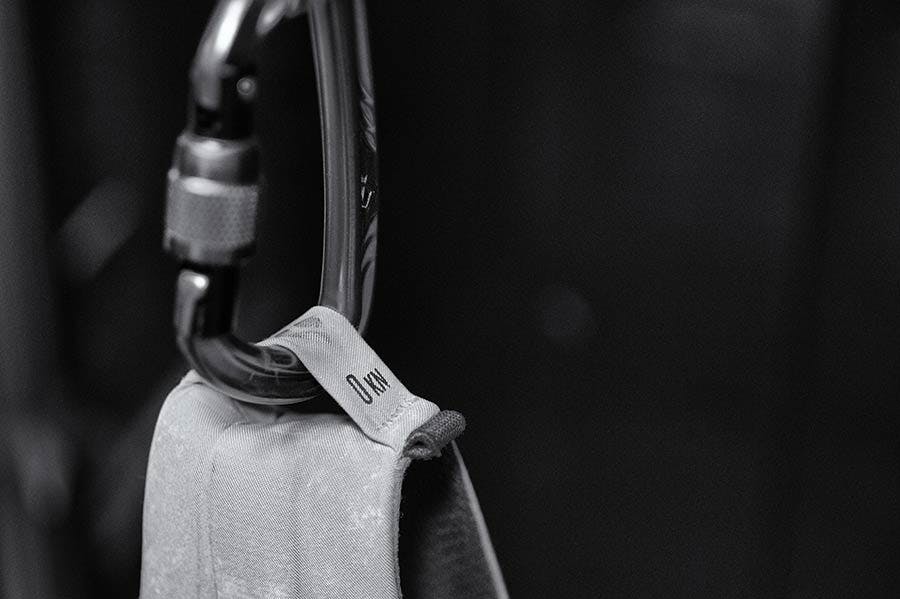
You may also notice that on some of our harnesses, we have a haul loop that doesn’t look like a belay loop—it’s perhaps a very thin layer of fabric looking more like a belt loop, and we’ll even call out 0KN directly on it. We do this to try and make it very clear that this is not strong. Some other companies do the same thing, intentionally making the haul loop look very weak to relay the fact that this component is not strong and not “full strength.”
Testing
Mandatory Disclaimer #1: As in most QC labs we write up, the purpose is to get some (hopefully) useful information to you, the climbers. This is not an extensive thesis-level study on the intricacies of harness design use and mis-use. Rather, it is a smattering of data to try to get a point across.
Mandatory Disclaimer #2: Please read manufacturing instructions on how to properly fit and use your harness. Read all warnings, get proper instruction, etc.
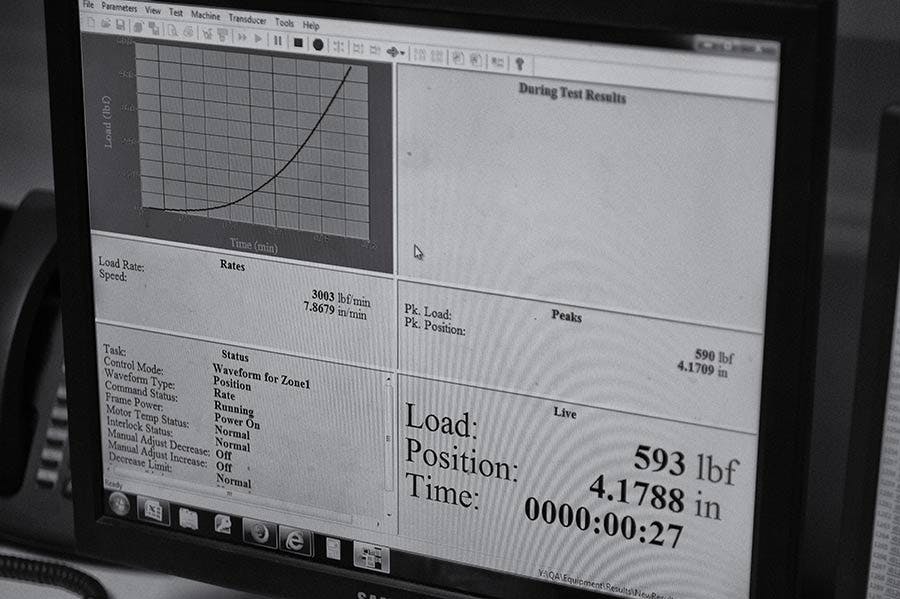
Once again, you should always tie in through the tie-in points and belay off the belay loop. A good rule of thumb from the association of Canadian Mountain Guides is this: “tie-in points are for fabrics, and the belay loop is for metal components.” So tie in, girth your personal anchor system, etc. through the tie-in point, and only clip carabiners through your belay loop. Your belay loop is for belaying (that’s why it’s called that). And of course you should never tie in or clip into your gear loops, haul loops, leg straps, etc.
For reference we pulled up some batch test data from several (10) different styles of BD’s harnesses which showed the following:

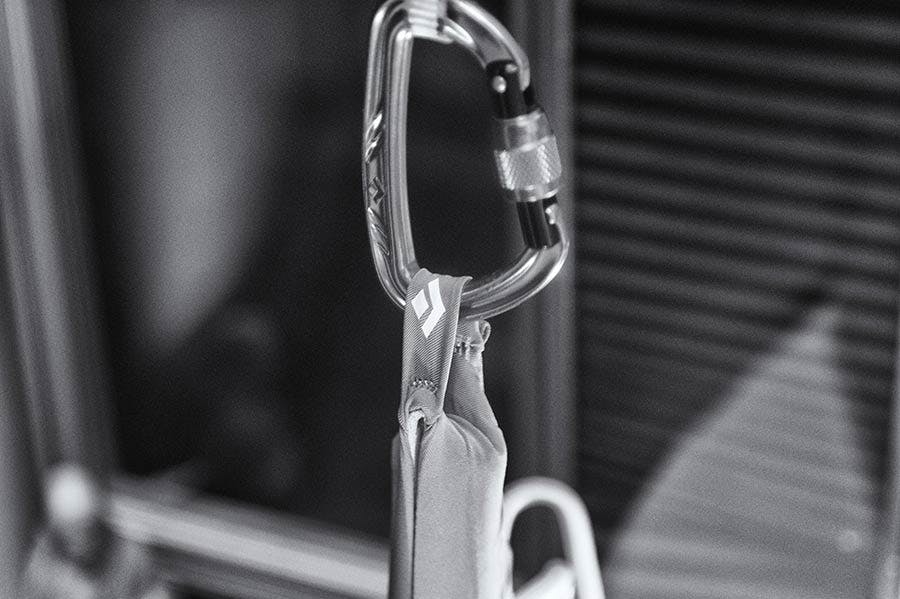
Now to give a sense of the actual strength of some of our harnesses’ haul loops and other components, we tested a variety of harnesses we had laying around in a number of ways. Some of these were old, beat, half tested and totally suspect, but we tested the belay loops, haul loops, gear loops, if you were to use a sling and just loop the waist, etc. Here are some cold, hard numbers:
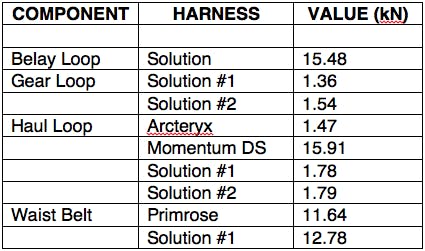
Conclusion
As described earlier, belay loops are burly and strong, gear loops are not, and haul loops can either be strong, or not. Generally, slinging the entire waist belt of a harness will result in significant strength, as one would expect.
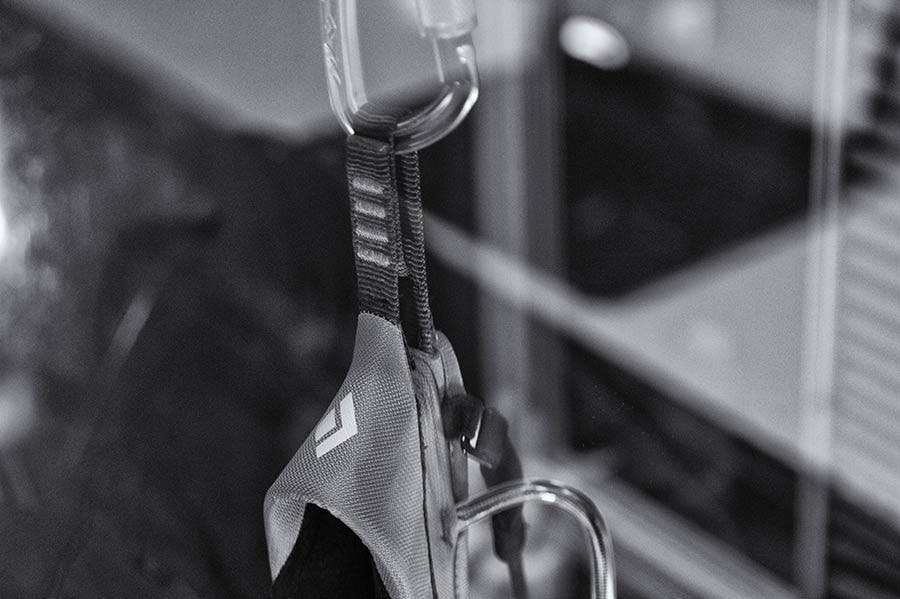
Bottom Line
The bottom line is that there really is no such thing as “full strength” in general climbing terms. If you’re talking about “full strength,” it really depends on what category of climbing equipment you’re talking about, because the requirements differ.
And the haul loop of your harness is for tagging a line (to haul up extra gear, haul the pig or as your second cord for retreat). Some haul loops may be strong, while others may not, and it’s not necessarily easy to tell. You should only ever use the tie-in points or belay loop of your harness for tying in, anchoring yourself in, or belaying.
Be safe out there,
KP


